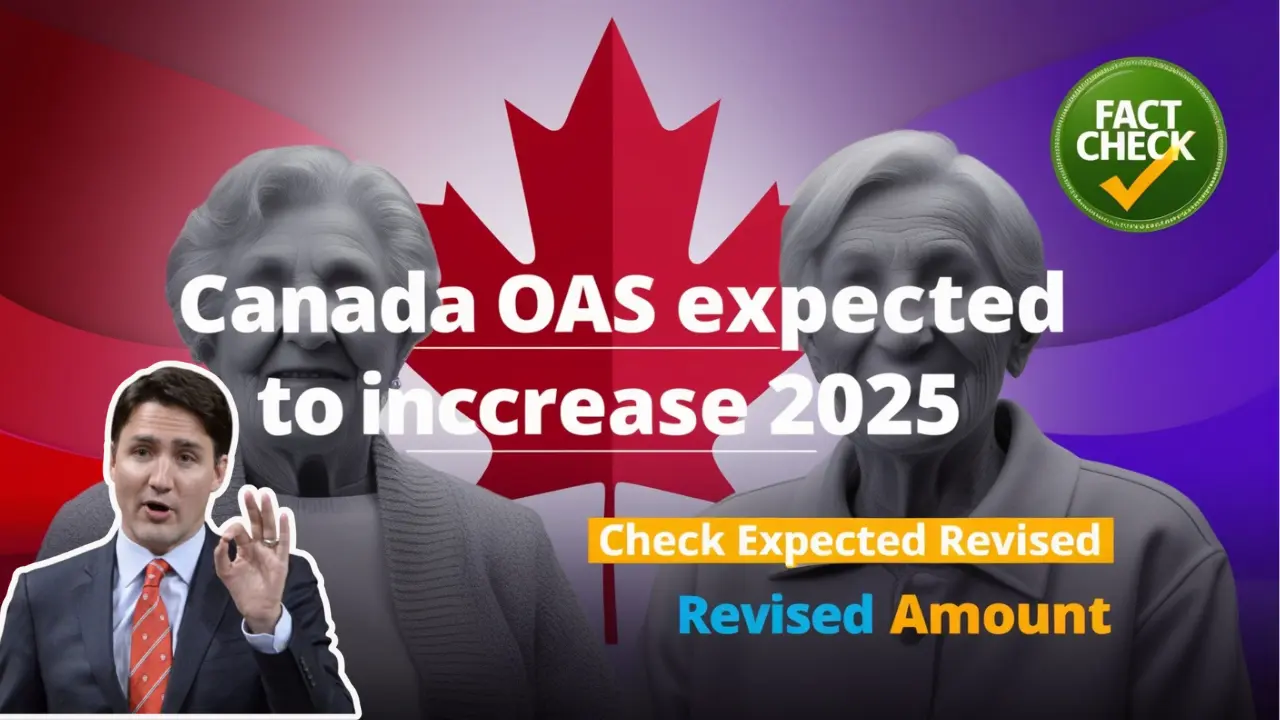Old Age Security (OAS) is one of Canada’s most essential programs for seniors, providing a financial safety net for individuals aged 65 and older. With rising living costs and increasing demand for retirement income, many Canadians are seeking ways to maximize their OAS benefits. In this article, we’ll guide you through the most effective strategies for boosting your OAS payments in 2025. From deferring your benefits to managing your income wisely, these practical tips can help you secure a financially stable retirement.
How to Increase OAS Benefits in 2025
OAS is available to Canadian citizens and legal residents who are 65 years or older. However, maximizing these benefits requires strategic planning. Here’s a breakdown of key factors that will help you optimize your OAS income in 2025.
| Key Fact | Detail |
|---|---|
| OAS Eligibility | Available to Canadian citizens and legal residents aged 65+ |
| Full OAS Amount | Requires 40 years of Canadian residency after turning 18 |
| OAS Deferral | Increases payments by 0.6% for every month delayed (up to 36%) |
| OAS Clawback Threshold | Begins at $87,397 in annual income (2024 figure) |
| Additional Benefits | GIS and provincial senior benefits may apply |
| Tax Considerations | OAS is taxable and may be subject to recovery tax |
For official details, visit the Government of Canada’s OAS page here.
What is OAS, and How Does it Work?
OAS is a federal program designed to provide a monthly income to seniors in Canada. The amount you receive depends on your residency in Canada, your age when you begin receiving benefits, and your income level.
While OAS is funded by general tax revenues (not directly tied to personal contributions like the Canada Pension Plan), the payments are taxable. For individuals with higher income levels, the OAS benefit is subject to a “clawback,” where the government gradually reduces the benefit as your income exceeds certain thresholds.
The OAS clawback threshold for 2024 is $87,397. If your income surpasses this figure, you may be required to pay back some or all of your OAS benefits, potentially reducing the financial support you receive.
Why Increase OAS Benefits?
Maximizing your OAS can be critical in ensuring a stable retirement income. Here are some reasons why you should consider strategies to increase your OAS payments:
- Enhanced retirement security: A higher OAS payment can help fill the gap if you have limited personal savings or pension income.
- Reduced financial stress: With increased payments, you can reduce reliance on other sources of income, ensuring a more stable financial situation.
- Effective retirement planning: By making smart decisions like deferring OAS and managing your income carefully, you can ensure you get the most out of the program.
Strategies to Maximize Your OAS Benefits in 2025
1. Ensure Full OAS Eligibility Through Residency
To qualify for the full OAS amount, you must have lived in Canada for at least 40 years after the age of 18. If you’ve lived in Canada for fewer than 40 years, your OAS will be pro-rated. For example, living in Canada for 30 years will result in receiving 75% of the maximum OAS amount.
If you haven’t yet met the 40-year threshold but plan to stay in Canada longer, consider extending your stay to reach this milestone and maximize your benefits.
2. Defer OAS Benefits to Increase Payments
Deferring your OAS benefits can significantly increase your monthly payments. For every month you delay receiving OAS beyond your 65th birthday, your payment increases by 0.6%, up to a 36% increase by age 70.
For example, if your OAS would normally be $1,000 at age 65, deferring it for five years would result in a payment of $1,360 per month by age 70. If you have other sources of income or expect to live a longer life, deferring your benefits can be a smart financial strategy.
3. Be Aware of the OAS Clawback
The OAS clawback reduces the benefit amount if your annual income exceeds $87,397 (as of 2024). If your income exceeds a second threshold, you could lose your OAS benefits entirely.
Tips to Minimize the Clawback:
- Income splitting: If you’re married or in a common-law relationship, consider splitting pension or retirement income to reduce your household income.
- Tax-deferred savings: Contribute to an RRSP (Registered Retirement Savings Plan) to reduce taxable income, and withdraw from RRSPs or RRIFs (Registered Retirement Income Funds) in low-income years.
- Tax-free savings: Invest in a Tax-Free Savings Account (TFSA). Withdrawals from a TFSA are not considered taxable income and can help you avoid crossing the clawback threshold.
4. Understand the Guaranteed Income Supplement (GIS)
The Guaranteed Income Supplement (GIS) is available to low-income seniors who qualify for OAS. GIS is not taxable and is not subject to the OAS clawback, making it a valuable source of additional income for those with modest earnings.
Eligibility for GIS depends on your income level, and it can significantly supplement your OAS payments if your income is below the prescribed threshold.
5. Plan for Taxes on OAS
Since OAS payments are taxable, understanding the tax implications is essential. If your total income exceeds a certain level, you may face higher taxes on your OAS benefits.
Tax Planning Tips:
- Work with a financial advisor or tax professional to manage your income and minimize the taxes on your OAS.
- Take advantage of tax credits such as the Age Amount, Pension Income Tax Credit, and Disability Tax Credit to reduce your taxable income.
Current OAS Payments & Projections for 2025
In 2024, the maximum OAS payment for a senior living alone is $1,235.03 per month, equating to $14,820.36 annually. The 2025 payment will be subject to inflation adjustments, helping to maintain the purchasing power of the benefit.
Although these adjustments are modest, they are important in keeping pace with the rising cost of living, especially in areas like healthcare and housing.
The Impact of Inflation on OAS
Inflation has a significant impact on seniors living on fixed incomes. While OAS benefits are adjusted quarterly to reflect inflation, many retirees find that the increases are insufficient to fully cover the rising cost of living, particularly for essentials.
As part of your retirement planning, consider additional sources of income, such as private pensions, RRIF withdrawals, or other investments, to help offset the effects of inflation.
By strategically planning and utilizing the above strategies, you can maximize your OAS benefits and build a more secure financial foundation for your retirement. Whether you’re nearing retirement or already receiving OAS, it’s crucial to understand how your decisions will impact your future financial well-being. If you’re unsure about the best approach for your situation, consider consulting a financial advisor to receive personalized guidance.



